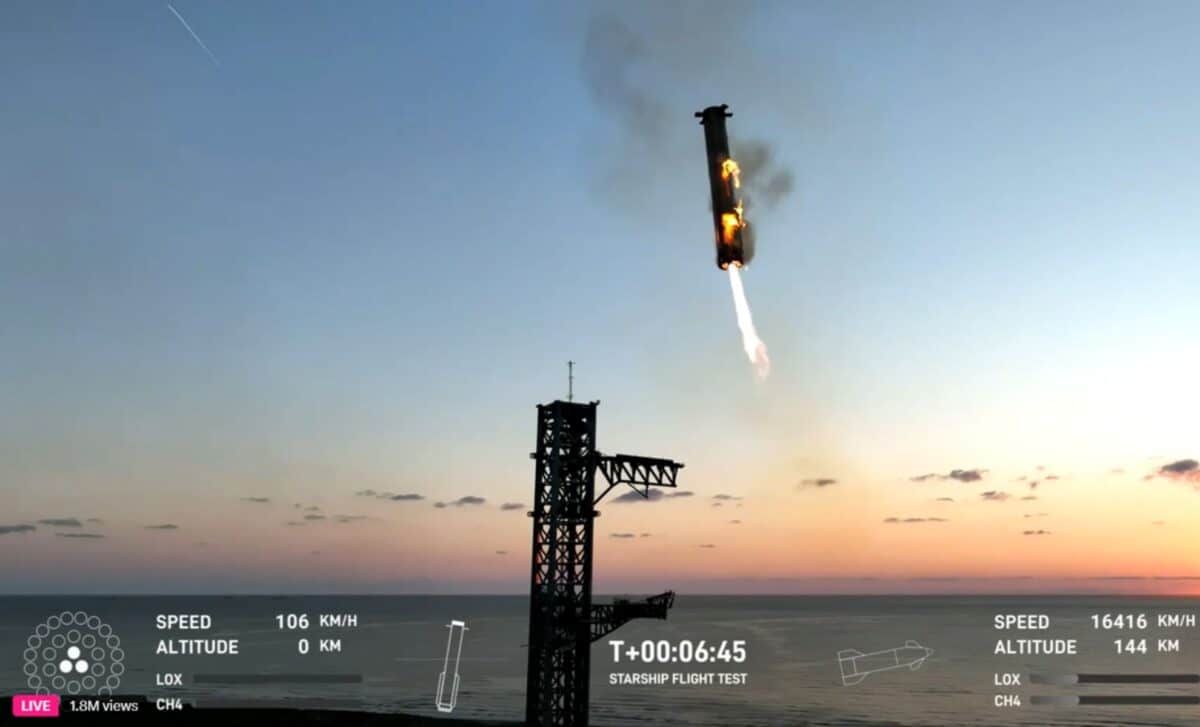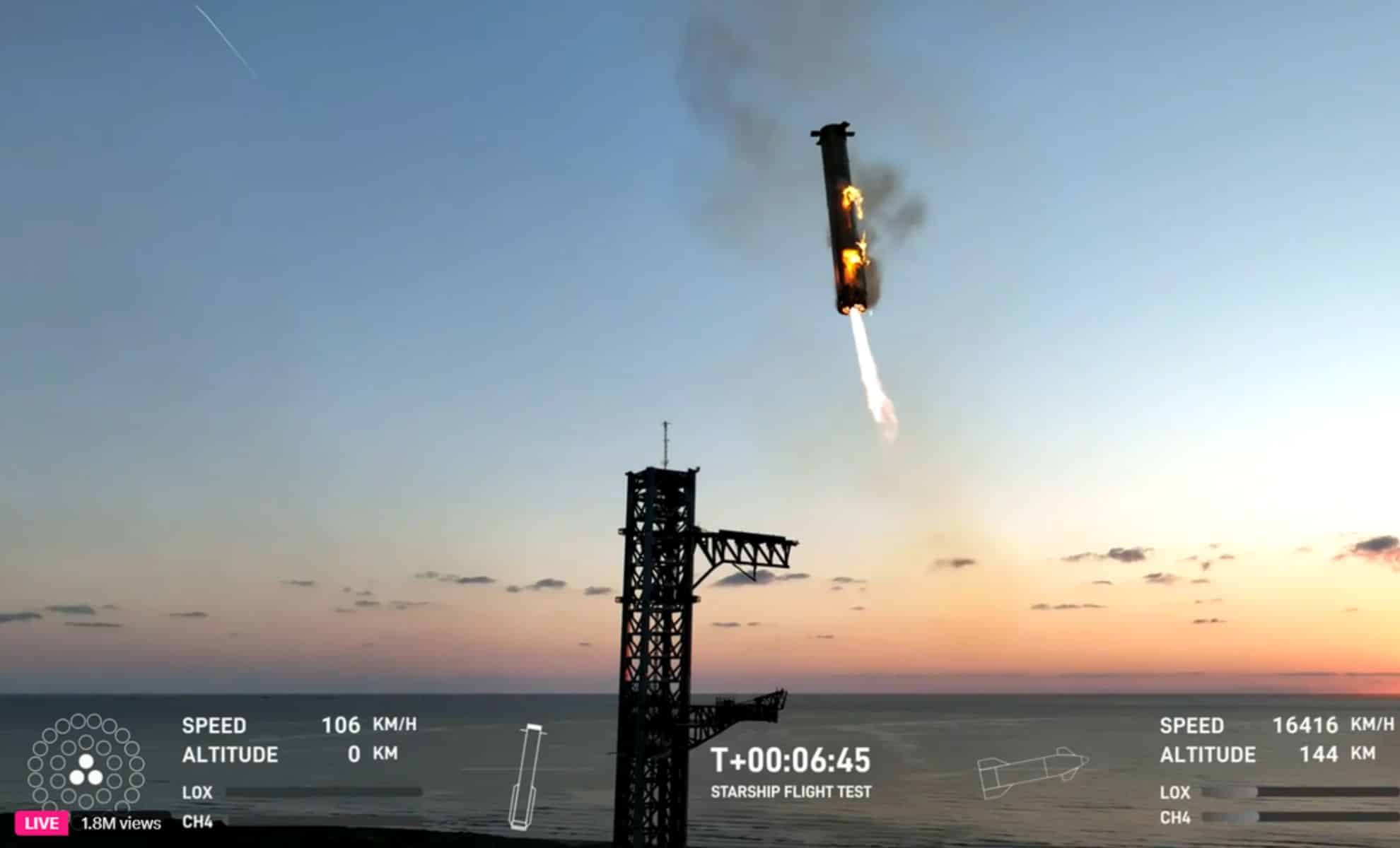SpaceX achieved a major milestone on October 13, 2024, with the successful launch and landing of its Starship rocket during its fifth test flight. For the first time, the massive Super Heavy booster was caught by the launch tower’s “chopstick” arms, marking a breakthrough in rocket recovery technology. This mission brings SpaceX closer to its goal of making space travel more reusable and efficient, with CEO Elon Musk calling it a “big step towards making life multiplanetary.”
SpaceX Successfully Launches and Lands Starship Booster in Historic Fifth Flight

SpaceX achieved a significant milestone on October 13, 2024, with the successful launch and landing of its Starship rocket during its fifth flight from Starbase, Texas. This mission demonstrated the company's ability to recover the Super Heavy booster using a revolutionary technique known as the "chopsticks" method. This is a major step forward in SpaceX’s goal of making space travel more efficient and reusable.
A Breakthrough in Booster Recovery
The Starship rocket, the largest and most powerful rocket ever built, was launched at 8:25 a.m. EDT (7:25 a.m. local time), marking the fifth flight in its ongoing test series. The flight was designed to test SpaceX’s innovative method of recovering the first stage of the rocket, known as the Super Heavy booster. Traditionally, rocket boosters have either been discarded or landed on barges for recovery. This mission, however, marked the first time SpaceX successfully caught the booster with the "chopstick" arms mounted on the launch tower.
The recovery of the Super Heavy booster occurred approximately seven minutes after liftoff. The massive booster hovered near the launch tower and was captured by its metal arms in a "bull's-eye landing," as described by SpaceX. Kate Tice, SpaceX’s manager of Quality Systems Engineering, expressed the excitement at the company's headquarters in Hawthorne, California, stating, "This is a day for the engineering history books… On the first-ever attempt, we have successfully caught the Super Heavy booster back at the launch tower." Her colleague, SpaceX spokesperson Dan Huot, described the feat as "magic" due to the unprecedented precision involved in the maneuver.
Starship’s Upper Stage Mission
While the Super Heavy booster’s recovery was the highlight, the mission also tested Starship’s upper stage, referred to as Ship. Standing 165 feet tall (50 meters), this stage was tasked with reaching space and then returning to Earth for a controlled splashdown in the Indian Ocean. 65 minutes after launch, the upper stage completed its mission by firing three of its six engines before tipping over and exploding in a controlled manner. Although SpaceX did not intend to recover the upper stage in this test, the mission was deemed a success.
Reflecting on the mission’s broader implications, Elon Musk, SpaceX’s founder and CEO, tweeted after the launch, "Big step towards making life multiplanetary was made today." The successful flight of Starship is seen as a crucial development in SpaceX’s long-term ambitions to colonize the Moon and Mars, as well as revolutionizing space travel with fully reusable rockets.
Engineering Improvements and Challenges
This fifth flight was not just a repeat of previous test launches. Significant upgrades were made to the Starship system, particularly in its heat shield, which had undergone more than 12,000 hours of rework by SpaceX technicians. The heat shield featured a new generation of thermal protection tiles, a backup ablative layer, and enhanced protection between the vehicle’s flaps. These modifications were aimed at improving the rocket’s durability during reentry into Earth’s atmosphere.
The road to this successful launch was not without delays. Initially, SpaceX had planned to conduct Flight 5 much earlier, but U.S. Federal Aviation Administration (FAA) approvals slowed the process. The FAA required additional time to review environmental and safety concerns due to changes in Starship’s flight profile. This delay, while frustrating for the company, ensured that all safety protocols were met before the launch.
Future of Starship and Its Impact on Space Exploration
The Starship rocket system is critical to SpaceX’s vision of space exploration. The company aims to make the rocket fully reusable, a key factor in reducing the cost and time needed between flights. This mission demonstrated that recovering the Super Heavy booster directly at the launch pad could significantly shorten the turnaround time for future launches. SpaceX is continuously iterating on its designs, testing modifications in successive flights, and this rapid development cycle is intended to meet the ambitious timelines for missions to the Moon and Mars.
SpaceX’s progress with Starship has already captured the interest of NASA, which has selected Starship to serve as the first crewed lunar lander for the Artemis 3 mission, set to take place in 2026. This mission will bring astronauts back to the Moon for the first time in over 50 years, with Starship playing a pivotal role in achieving that milestone. The vehicle’s enormous payload capacity and reusability make it an attractive option for deep-space exploration, not just for NASA, but also for future missions to Mars.
The success of Flight 5 positions SpaceX one step closer to its ultimate goal of enabling humanity to become a multiplanetary species. As the company continues to refine Starship, its potential to revolutionize space travel and make interplanetary exploration a reality grows stronger with each successful test.



